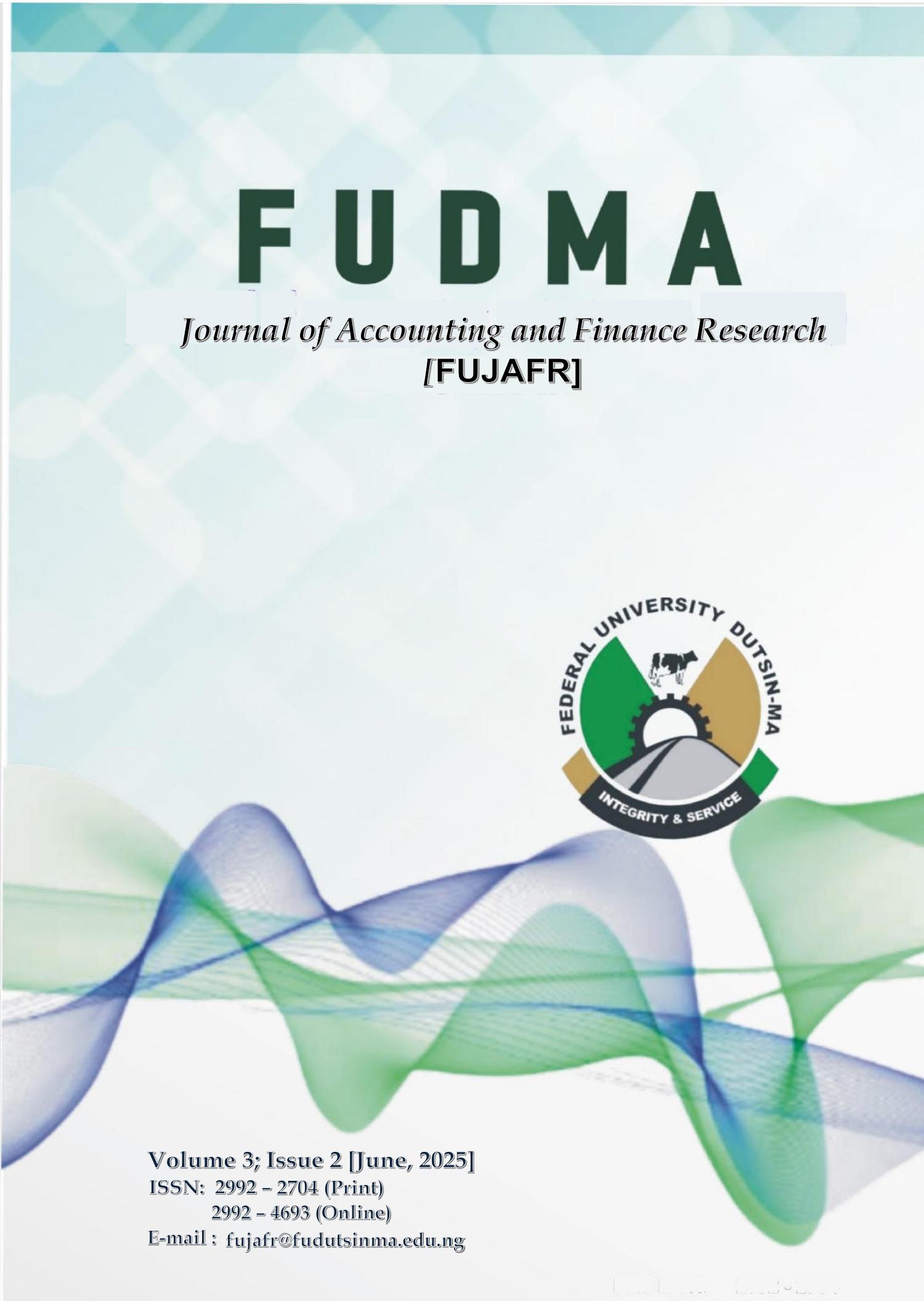The Control Activities of Financial Institutions in Nigeria and Risk Assets Quality
DOI:
https://doi.org/10.33003/fujafr-2025.v3i2.187.199-211Keywords:
Assets Quality, Capital Adequacy, Control Activities, Financial InstitutionsAbstract
In view of the persistent collapse of financial institutions in Nigeria, it became eminent to ascertain how control activities affect the risk assets quality of Nigerian financial sector. The study applied ex-post research design method and relied on secondary data spawned from yearly financial records spanning 2010-2023. The population of the study comprised all eleven (11) categories of financial institutions operating in Nigeria as of December 31, 2023, in line with the classifications provided by the Central Bank of Nigeria (CBN). A purposive sampling technique was applied to select institutions from four key categories: deposit money banks, non-interest banks, development banks, and merchant banks, resulting in a total of 42 institutions. For empirical analysis, the study adopted Feasible Generalized Least Squares (FGLS) estimation technique. The findings revealed that both Capital Adequacy Ratio (CAR) and Loan to Deposit Ratio (LDR) have a positive and insignificant influence on non-performing loans, while Loan to Assets Ratio (LTAR) was found to have a negative and not significant effect. In view of the findings, policy makers and financial institutions should exercise restraints in placing too much emphasis on CAR and LDR, and instead strengthen internal credit risk control, due diligence process and adherence to early warning signals. Furthermore, lending should be guided with a well-defined risk appetite and efficient recovery process.
Downloads
Published
How to Cite
Issue
Section
License
Copyright (c) 2025 FUDMA Journal of Accounting and Finance Research [FUJAFR]

This work is licensed under a Creative Commons Attribution-NonCommercial 4.0 International License.
No Rights Reserved





